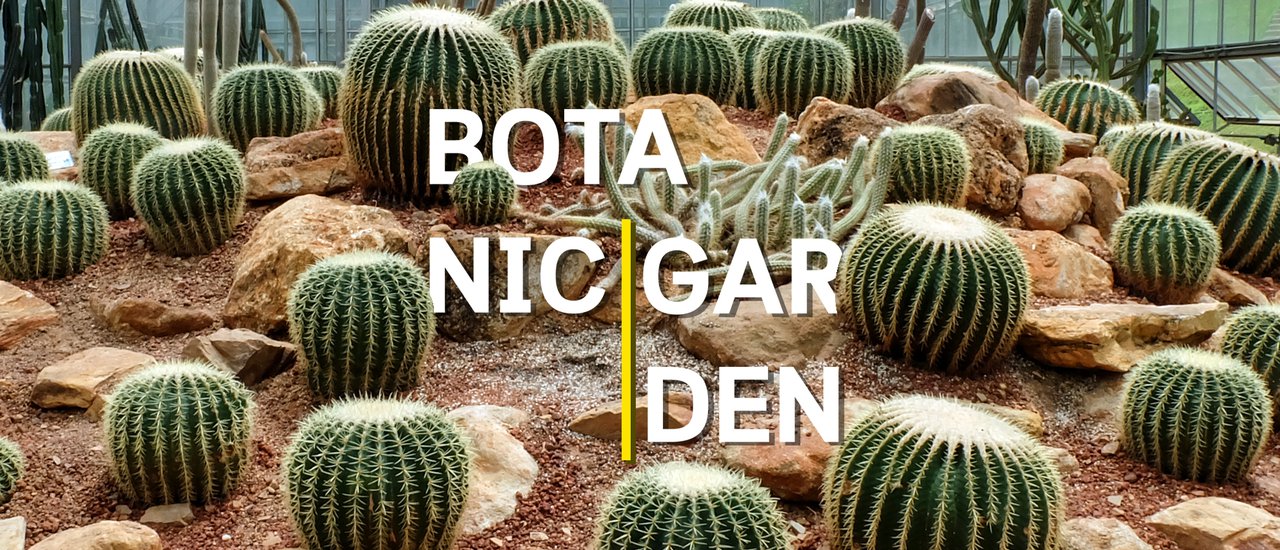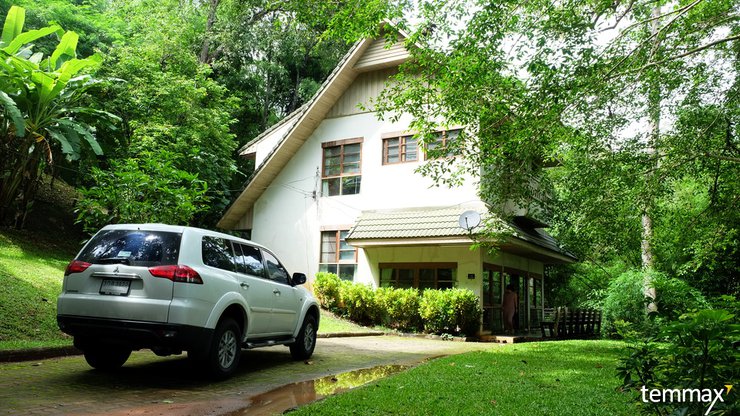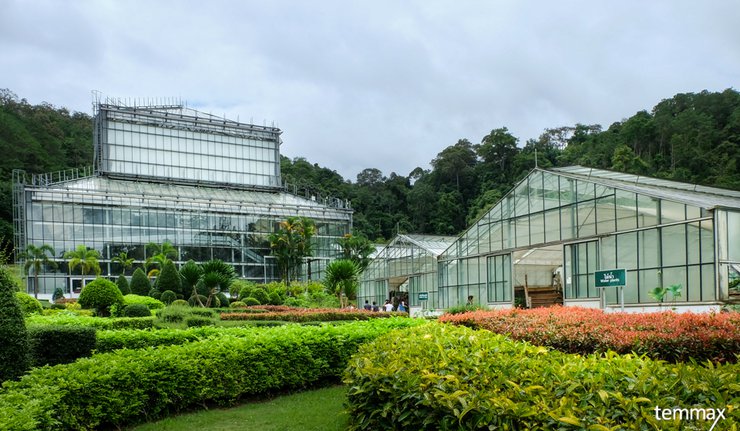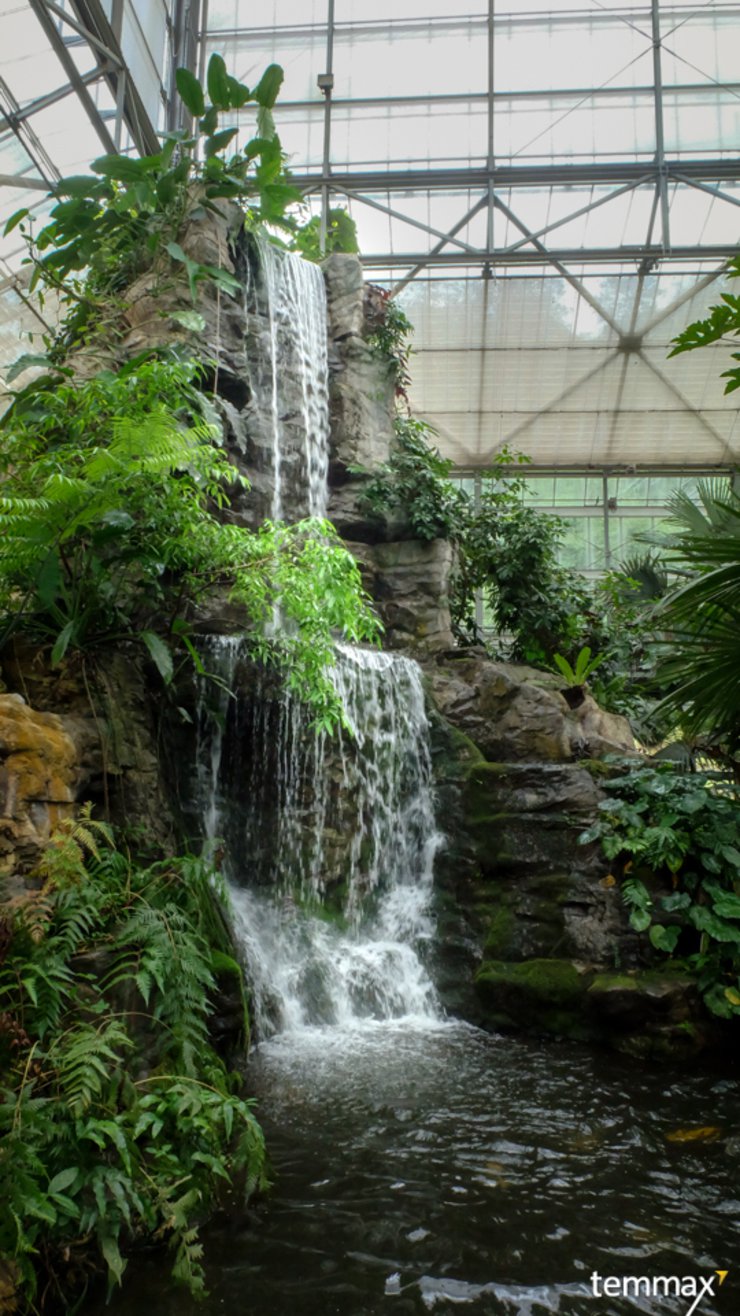Embark on a unique Chiang Mai adventure, venturing beyond the bustling streets and tourist hotspots. Immerse yourself in the serene embrace of the Queen Sirikit Botanical Garden, a haven of diverse flora and captivating natural beauty. Discover exotic plant species, lose yourself in the tranquility of the surroundings, and capture stunning photographs that reflect your love for nature.
..
This botanical garden is located on Route 1096, Mae Rim - Samoeng, on the same road as the way to Mon Cham. The road is winding and turning, but it also refreshes us with green leaves all the way. It is easy to notice on the left-hand side.

This trip to Chiang Mai, I came with www.reviewsiam.com and www.trailtrav.com. So we chose to rent a car for the convenience of traveling, carrying luggage, and helping to save a lot on this trip.

THAI RENT A CAR is currently offering a weekday promotion. Click here for more details. It's a great deal!

The Queen Sirikit Botanic Garden, spanning 6,500 rai, is located within the Doi Suthep-Pui National Park in Mae Rim District, Chiang Mai. While it may appear to be a mere showcase of beautiful plant species for tourists, the garden's true purpose lies in the conservation, propagation, and research of plant life. Notably, it holds the distinction of being Thailand's first international botanic garden.
..
..
The Botanical Garden is divided into several zones, but the highlight zone that photography enthusiasts should not miss is the Canopy Walk / Glasshouse Complex / Natural Science Museum. You are guaranteed to get beautiful pictures to update your profile!
..
Let's start with the first part.

The Glass House Complex, also known as the "Celebration Glasshouse," is a large greenhouse in the Botanical Garden. It houses a diverse collection of plants, meticulously categorized and displayed. Each greenhouse meticulously recreates the natural environment of the plants within, meticulously controlling humidity, light, and temperature to suit the specific needs of each species. This meticulously curated environment provides an immersive and educational experience for visitors, making it a highlight of any trip to Chiang Mai.

This greenhouse is called the Tropical Rain Forest Glasshouse Complex or the Tropical Rainforest Glasshouse.

The greenhouse houses a diverse array of rainforest plant species, artfully arranged and interspersed for aesthetic appeal. Upon entering the building, one is immediately struck by the increased humidity compared to the outside, along with the sound of rushing water, creating a truly immersive rainforest experience.

The greenhouse features a simulated waterfall, creating an ideal humid environment for plant growth.

Visitors can explore the botanical garden via designated pathways, including elevated skywalks that offer panoramic views of the surroundings and ground-level trails that allow for close encounters with the diverse plant life. This unique feature makes the Chiang Mai Botanical Garden a must-visit destination.
The next greenhouse is the Arid Plants Glasshouse Complex, which houses a collection of drought-tolerant plants.

Upon entering, the first impression is of a barren landscape reminiscent of a camel's habitat. The dominant feature is the presence of cacti, not the small potted variety favored by hipsters, but rather large specimens exceeding one foot in height. These cacti are arranged in a desert garden, interspersed with red-brick colored soil and rocks, creating the illusion of a transplanted Gobi Desert hill within the botanical garden.

Here, we will observe various plant species that have adapted to withstand arid conditions. A simple and clear example is the cactus, which has evolved from leaves (which lose water easily) to sharp spines to reduce water loss and protect itself.

Guaranteed to have fun taking cool photos. If you want a background like this, you have to come here. Otherwise, you'll have to go to the desert.

In addition to cacti, this botanical garden also features other drought-tolerant plants, such as the Zebra Haworthia, which resembles a cross between an aloe vera plant and a zebra, complete with flowers on long, tall stalks.

Or perhaps it could be the Flaming Kathy succulent, with its fleshy, blue-green leaves arranged alternately and gradually increasing in size from small to large.


Another pavilion not to be missed when visiting the Botanical Garden is the **Carnivorous Plant Garden**.


This section of the botanical garden showcases carnivorous plants, which have evolved to survive in nutrient-poor soil by trapping insects and small animals for sustenance. Visitors familiar with documentaries will recognize the iconic pitcher plants, with their gaping mouths awaiting unsuspecting insects to fall into their digestive pools. These plants then absorb the nutrients to nourish their stems.
The greenhouse complex also features other sections dedicated to aquatic plants, ferns, and orchids. Exploring all the greenhouses thoroughly requires several hours, so be mindful of the time to avoid getting lost in the captivating displays of exotic plants and picturesque photo opportunities.

Beyond the greenhouse complex of the Botanical Garden, a staircase leads to a tunnel of verdant trees.

The cool breeze caresses your face as you walk through the tunnel, creating a truly refreshing experience.

If you're looking for souvenirs or gifts from Chiang Mai, we recommend stopping by a souvenir shop with a wide variety of items to choose from. You're sure to find plenty of attractive and collectible items.


After a refreshing stroll outdoors, let's embark on a leisurely and educational journey to a must-visit spot within the Botanical Garden.

This is the Natural Science Museum, which showcases interactive exhibits from the past to the present. Touchscreens, lights, sounds, and colors make learning more enjoyable.

Despite the vast and intricate nature of the subject, this explanation simplifies it, making it accessible to all ages.



Forestry has been a subject we have learned since elementary school, and we have returned a lot of knowledge to our teachers. However, when we come here, it is like dusting off and reviving our knowledge. From the black and white pictures in the past, today we have seen the faces and understood nature more. This corner explains the characteristics of all 10 types of forests in Thailand, including the specific characteristics of all plant species, with easy-to-understand infographics.


Everything has its origin, and the history of botany in Thailand is no exception. This section introduces us to important figures who have played a role in the study of botany from the colonial era to the present day.

Explore the fascinating world of bees, from their diverse roles within the hive to the valuable products they provide.

The sentence is already in English and does not require translation.



This location also offers photo opportunities with 3D paintings.


A variety of insect-eating plants, Dandelion flowers, and many other angles for taking pictures, allowing you to unleash your imagination to the fullest.



After having fun with 3D photography, we delve into topics that are closer to our daily lives.

This section showcases the significance of botany to humanity since prehistoric times. It explores the utilization of forest resources, reliance on nature, and the adaptation of stones to wooden handles to create hunting weapons.

In ancient Egypt, natural fibers were woven into clothing and used in mummification.

The use of papyrus fibers, overlapped and woven together, to create papyrus paper is considered the origin of the first paper in the world.

The wooden bicycle, originating in Germany, was designed as a substitute for horse-drawn transportation before evolving into the modern metal bicycle.

..
..
..
The final recommendation is the Canopy Walks, a path that allows visitors to walk above the treetops.

This is the longest nature trail in Thailand, stretching 400 meters and offering panoramic views above the treetops. The backdrop includes trees, mountains, and even a distant glimpse of the sea of mist.

Nestled in the heart of Chiang Mai, the Queen Sirikit Botanical Garden, also known as the Queen Sirikit Botanic Garden, is a haven for nature lovers and enthusiasts alike. This verdant oasis offers a captivating journey through diverse plant life, providing visitors with an opportunity to learn, appreciate, and connect with the wonders of the botanical world.
From the moment you step into the garden, you are enveloped by a sense of tranquility and awe. Lush greenery surrounds you, creating a serene atmosphere that invites you to slow down and immerse yourself in the beauty of nature. As you wander through the various themed gardens, you will encounter a kaleidoscope of colors, textures, and scents that will captivate your senses.
The Queen Sirikit Botanical Garden is not merely a collection of plants; it is a living museum that showcases the rich biodiversity of Thailand and beyond. The garden houses over 4,000 species of plants, including rare and endangered species. Each plant has a story to tell, and the knowledgeable staff is always eager to share their insights and passion for the botanical world.
Whether you are a seasoned botanist or simply someone who appreciates the beauty of nature, the Queen Sirikit Botanical Garden is a must-visit destination. It is a place where you can learn, relax, and reconnect with the natural world. So, if you find yourself in Chiang Mai, be sure to add this botanical gem to your itinerary. You won't be disappointed.
Temmax : กิน เที่ยว แบบเต็มแม็กซ์
Tuesday, October 8, 2024 11:23 AM
















![Cover [Promo code] Get 1300 Baht off your Airbnb stay! > Simply open an ac...](https://asset.readme.me/files/58023/thumb.cover.jpg?v=840dea25)




